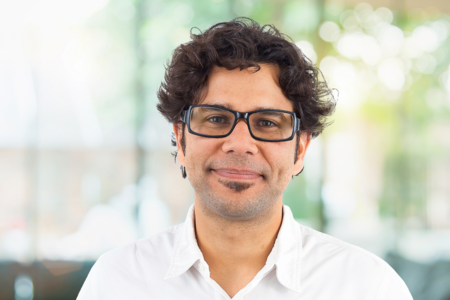Talkin’ Coffee Conservation & Use: Q&A with Sarada Krishnan
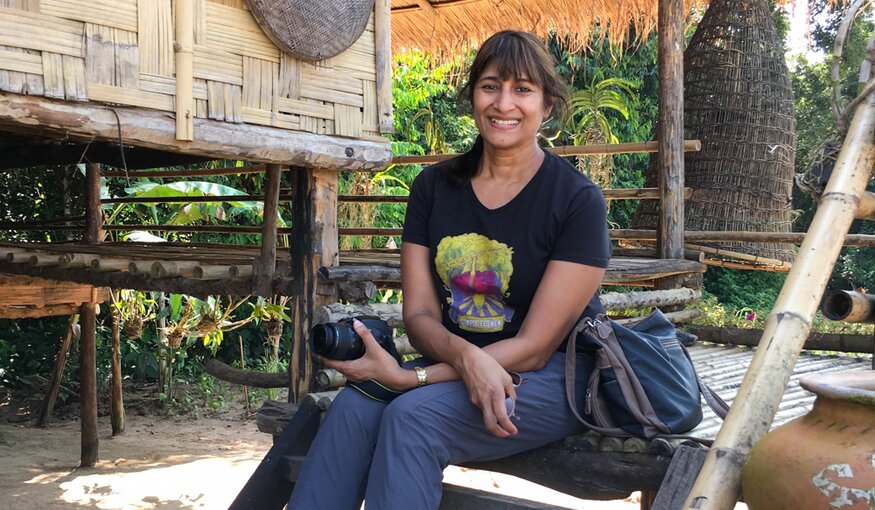
7 March 2019
Interview: LM Salazar | Crop Trust
One could say that her professional relationship with coffee began with an old photograph of her late father. By chance, the image fell out of a book. He was standing in her family’s coffee plantation in Kerala, India. She was in Boulder, Colorado, in need of a research topic for her doctoral dissertation. That was in 2006.
Today, Sarada Krishnan, Director of Horticulture and Center for Global Initiatives at the Denver Botanic Gardens is, by all accounts, a renowned coffee genetic resources expert, and as such, one of the main authors of the Global Conservation Strategy for Coffee Genetic Resources, an effort the Crop Trust carried out in conjunction with World Coffee Research (WCR) in 2017.
Sarada’s involvement in making sure coffee diversity is safeguarded forever did not end with the publication of the Strategy. We’re honored to have her as one of our key partners in our ongoing coffee conservation-related efforts. And as a globetrotting public speaker, she’s regularly out there somewhere – from Seattle to Seoul -- sharing the Strategy’s findings with the myriad of actors that play a role in the global coffee industry. So today, as we celebrate International Women’s Day, we share with you this recent exchange Sarada and I had via Skype, where we discuss the Strategy’s findings and the importance of coffee diversity. Our conversation has been edited for brevity.
Luis Salazar: How did you get involved with coffee?
Sarada Krishnan: You could say coffee is in my blood. I grew up in India and my family has always owned coffee farms there. It is part of my family heritage. Agriculture and science are too. My uncle, Dr. Swaminathan is a distinguished agricultural scientist who worked with Dr. Norman Borlaug to bring about the green revolution in India. He is also a big friend of the Crop Trust.
LS: So how did you go from spending time as a child in your family’s coffee farms in India to getting involved in the Global Conservation Strategy for Coffee Genetic Resources?
SK: My Doctoral work was on wild coffee species in Madagascar. I worked with the FOFIFA genebank [FOFIFA Kianjavato Coffee Research Station] and compared the genetics of four different species of coffee safeguarded there with the same four species found in the wild, to make conservation recommendations. That’s where it all began.
Then, in 2010, I was involved in a congress to talk about the formation of a global research institution -- what two years later became WCR. Soon thereafter, Tim Schilling [Founder and Chief Executive Officer of WCR] was about to embark on a South Sudan expedition, searching for arabica diversity, and asked me if I would serve as one of the scientists in that project. I did. In 2013, I published a paper on the current status of coffee genetic resources, which provided the background for raising awareness about the need to conserve coffee genetic resources and the development of the global strategy. So, when the Global Conservation Strategy project came up, Tim invited me to participate, as a coffee expert, and on behalf of WCR.
LS: For those readers who have not had the chance to read the Strategy, or the Summary, can you tell us briefly what it was about and what were the major findings.
SK: The whole purpose of the Conservation Strategy was to understand what really constituted the global genetic resources of coffee; how they are being protected; and what are the needs and challenges the genebanks face.
After carrying out a thorough background study on the vulnerability of coffee genetic resources conserved ex situ and in situ, we sent out a survey to all the coffee genebanks in FAO’s Wiews [World Information and Early Warning System on Plant Genetic Resources for Food and Agriculture, the information system used by FAO for the preparation of periodic, country-driven global assessments of the status of conservation and use of plant genetic resources]. A total of 16 out of 32 genebanks responded. We also visited seven genebanks and one private collection. We would have loved to visit them all, but due to financial and human resource constraints, we just couldn’t. Nevertheless, these visits helped us get a bigger picture of what is out there.
So what were the key findings?
- Many of these genebanks house diversity that came from FAO collecting expeditions that were carried out in the ‘60s and ‘70s. Even back then, 50-or-so years ago, collectors searched for materials knowing the importance of, and the urgent need to conserve coffee genetic resources. And there are still many species that are missing from these collections.
- A lot of them – if not most – do not have the necessary resources to sustain them. Funding and human resources are a challenge. Specially in Madagascar, where the collection is in a very remote location. So, finding and training the right people, and keeping them in the genebanks to maintain these collections is another challenge.
- A lot of these collections are strictly used for in-country breeding projects. They are not being shared between countries.
- There is no global database where one can find information on the coffee diversity safeguarded in ex situ. Say, if I am in the United States and I want to lead a breeding program, I could select this accession and that one from X or Y collection and then figure out a deal to have access to the germplasm if information were available in a global database. The lack of this resource is one of the biggest challenges restricting global access.
- There are no backups to any of these collections. And I know Cote d’Ivoire lost quite a few of their accessions [plant samples] during the civil war, because there simply was no way of providing maintenance to the collections.
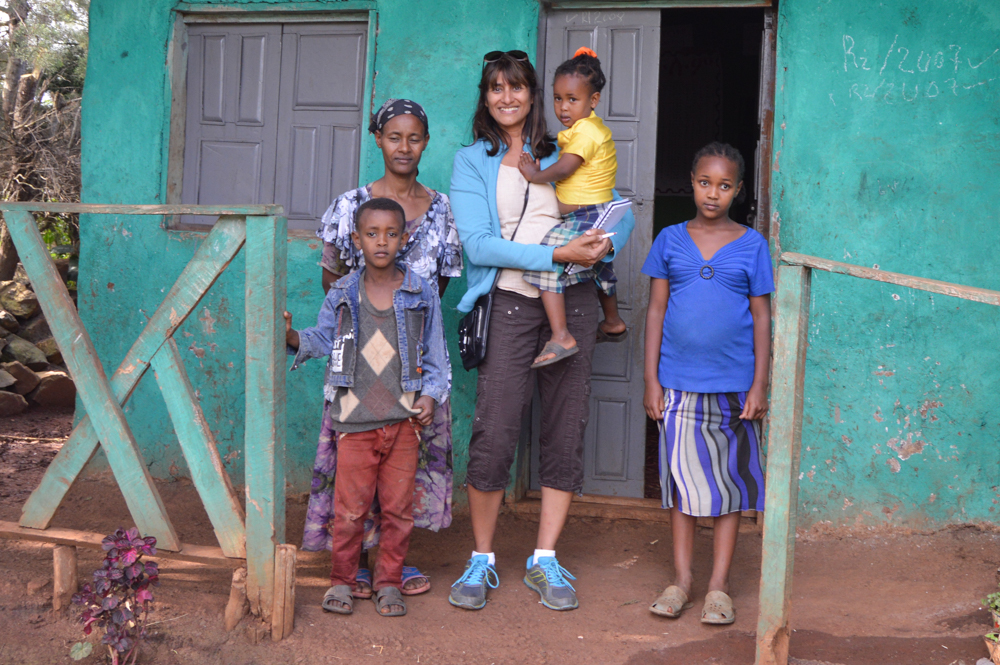
During Sarada's visit to the Ethiopian Biodiversity Institute (EBI) Choche Field Genebank she also met coffee farmers in the Bonga Biosphere Reserve.
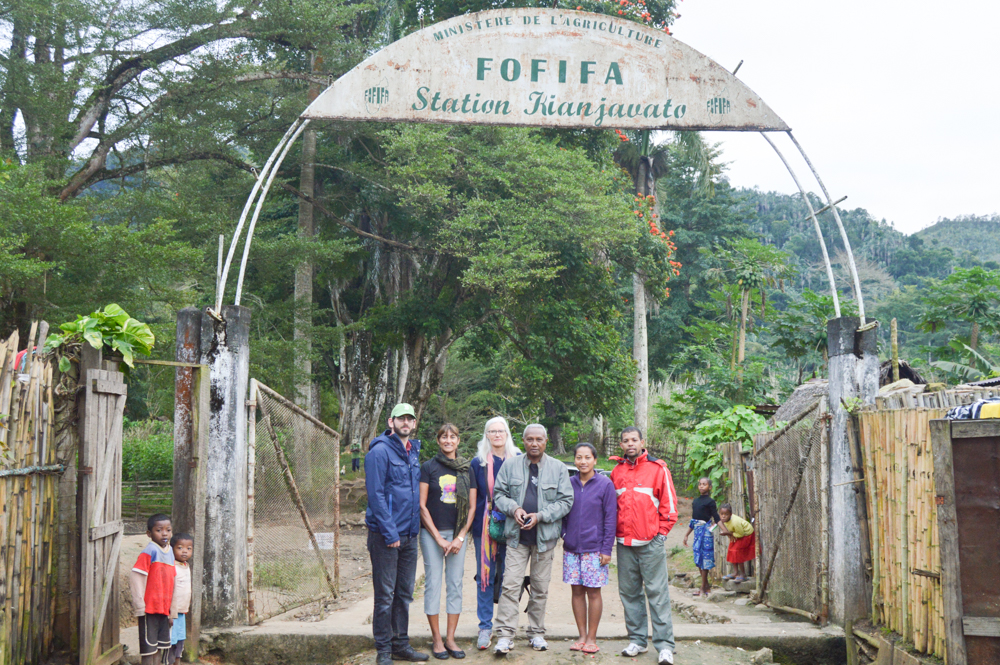
Sarada and the Crop Trust conservation strategy team met with FOFIFA staff at the Kianjavato Coffee Research Station in Madagascar.
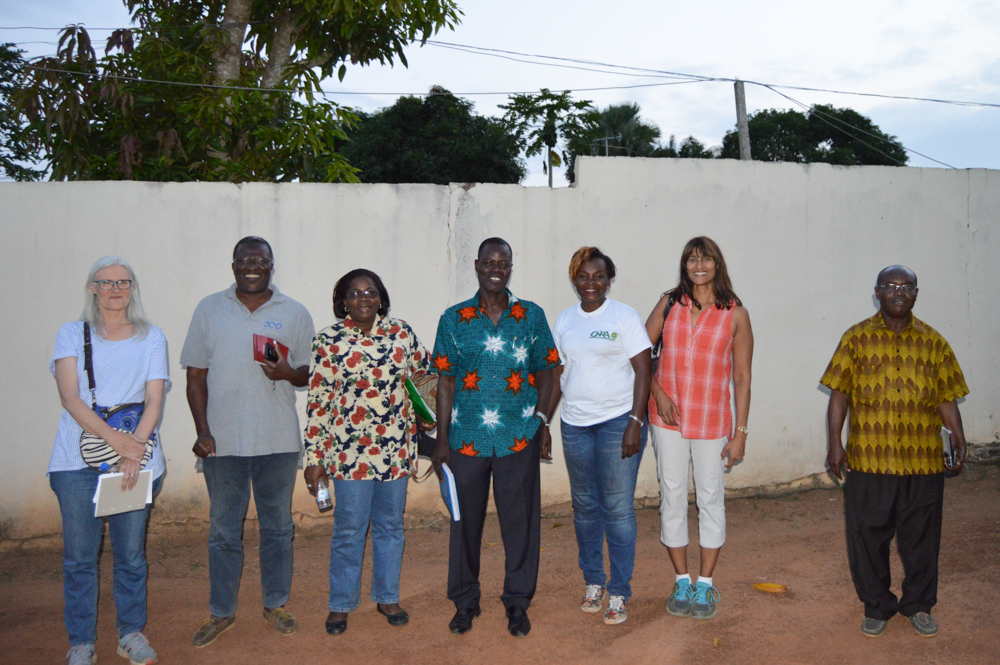
During the coffee conservation strategy research phase, Sarada and the Crop Trust's Paula Bramel visited the Centre National de la Recherche Agronomique (CNRA) Coffee Genebank in Ivory Coast.
LS: Sometimes, even less dire circumstances can lead to loss of diversity, even in ex situ collections. The Strategy actually states that some coffee genetic resources indeed have died in these genebanks, and others are at risk of disappearing. As you were carrying out the research, was there a moment where this hard, sad fact made itself clear?
SK: I already knew the challenges the Madagascar genebank had been facing, but when we visited in 2016, we learned that an entire collection in a second location had been wiped out because of a cyclone.
At the CATIE [The Tropical Agricultural Research and Higher Education Center] collection in Costa Rica, a lot of the trees are aging. In some cases, there is only one tree per accession. In other words, that one genotype, for all we know, is a tree away from extinction. These examples really opened our eyes.
If these collections are not backed up, we might lose them, forever.
LS: The main conclusion of the Strategy was the identification of what we now call the Origin Collections, four genebanks that together house the largest unique diversity of coffee. Can you talk about how it was determined that these collections safeguarded the most important diversity?
SK: Well, Madagascar has its own unique diversity. It safeguards 59 species – almost half of the coffee species are native to the island. And if you look at the recent Aaron Davis [Head of Coffee Research at Royal Botanic Gardens, Kew] paper that came out, more than 70% of the Madagascan species are in some type of threat or critically endangered in the wild. So, supporting them long-term is one of the highest priorities.
Ethiopia is the center of origin of arabica coffee, which represents 60-63% of the cultivated coffee production. If we want to tap into arabica diversity, Ethiopia is where we need to go to. In their collections and wild forests, we’ll find the coffee diversity that is needed to face all the challenges related to climate change, including pests and diseases.
The Core d’Ivoire collection, being in West Africa, houses many different species native to that region – diversity that is not represented anywhere else in the world.
I believe they have 22 species or so in that genebank.
And then we highlighted the particular importance of the international coffee collection at CATIE. Even though Central America is not a region where coffee originated, or is even native, this is the only coffee collection in the world that can be shared under the specific rules of the FAO’s Plant Treaty, which guarantee both facilitated access and benefit sharing.
LS: Could there be some wonderful, delicious coffees that we do not know about in those collections?
SK: There could be. The Geisha coffee is a perfect example. It was in the CATIE collection for a long time [since 1953] and then Panama came [in the early ‘60s] and requested some of the materials to distribute to their farmers. In the early 2000s it was found by chance. I mean, it was growing at the Hacienda La Esmeralda, Price Peterson’s farm, and they put it in an auction and its taste blew everyone away. So, there could be coffees like Geisha hiding in these collections, or even in the forests of Ethiopia. We won’t know this, until we explore them.
LS: Looking at the state of the coffee industry now, and the challenges moving forward, how can coffee diversity help?
SK: By 2050, the prediction is that consumption will double. This obviously means production needs to double by 2050. But coffee, specifically arabica, is very susceptible to climate change – not only to the change in temperatures in coffee-growing countries, but also the pests and diseases that come about due to these changes. The coffee industry can be greatly impacted, with production levels potentially decreasing substantially. Like it or not, we might have to rely on robusta coffee. In other words, we will have lower quality coffee. The catch here is that more and more consumers have become very discerning with regards to taste, and are increasingly demanding specialty coffees, rather than commodity coffees.
We need to develop new, sturdier varieties, without sacrificing quality. And for that we need to incorporate genes from other coffees that are pest, disease and/or drought or frost tolerant.
- Work
LS: We live in an interdependent world. We all drink coffee, and we all want to continue drinking it for years to come. But if the diversity that can be accessed across borders is limited, how do we – the global “we” – move forward? How do we climate-proof our coffees?
SK: I think that all coffee-producing and consuming countries need to come together and figure out what access and benefit sharing looks like for coffee. Safeguarding and making available coffee diversity cannot be an issue strictly limited to the coffee producing countries. The consuming countries also have a responsibility here.
A lot of times, when you don’t see the actual production, you do not know what really goes into producing coffee. I think the industry can do a huge favor to the producing countries by building awareness around the many problems producers face, year in, year out. And the problems faced by the genetic resources community.
Everybody has a big role to play. Including all the consumers. So if you do not want to lose coffee, ask yourself: ‘what can I do to protect it?’ We need to figure out a way to enable the sharing.
LS: On a personal level, how does it make you feel to be part of all this? To be an active, key player in developing the Strategy and the sharing this information with the world?
SK: You may not know this about me, but I also have a coffee farm, in Jamaica. So, personally, I also have a huge stake in making sure that these coffee genetic resources are protected and used to improve the industry. I have invested quite a bit in farming, and, like all producers everywhere, I want to run a profitable business.
Having access to, and using these genetic resources means we must support the genebanks that are carrying out their conservation effort, as well as those in the industry doing research.
Making it available to the farmer empowers her or him to make proper decisions, allows her or him to produce quality coffee and have high production. And that way, farmers can also sustain their livelihoods.
LS: Speaking about farmers, and given the growth of the specialty coffee sector, is there a rise in the use of, or exploration of, coffee diversity?
SK: If you are a farmer with means and education, you probably would. Price Peterson is an example. But most coffee producers are smallholder farmers and they do not have the resources or knowledge to do so, unless there is an extension agency that is promoting diversity. I think this should be part of national programs that helps coffee farmers make an honorable living. There are other resources too. WCR has published a Variety Catalog that farmers can use to make informed decisions of what varieties might work best on their farms.
LS: Last question: the Strategy draws a line in the sand, a before and after. What does that mean to you and to the world?
SK: The Strategy proves that there is an urgency and a need to help prevent further loss of coffee diversity. It identified the Origin Collections and helps us understand what shape these genebanks are in, and what is needed for them to fulfill their conservation mission, long-term.
As a first step, we need to help CATIE upgrade its collection and bring it up to international standards; make sure that those materials are protected and available. Though over time, portions of the CATIE collection have been duplicated in other places – Brazil, Colombia, India – it is presently the only pipeline for any kind of breeding research. Knowing this, actors across the whole coffee industry should support this effort. It’s simple: if we want great coffees, we need to protect coffee diversity.

